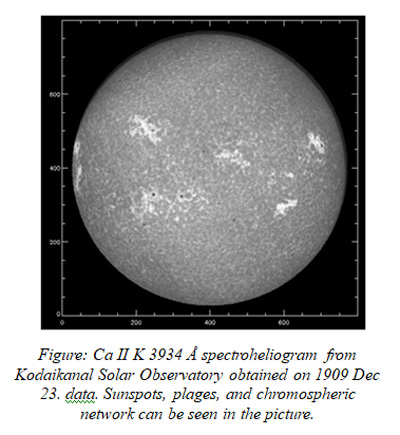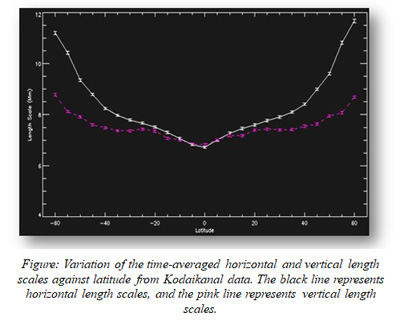 Much of what goes on inside the fiery ball of the Sun, like solar flares and high temperature of the solar corona (the outer solar atmosphere), still remains a mystery. Inside, the fiery ball that is the primary source of energy, the magnetic field interacts with thermal convection to form a network structure called supergranular pattern with cell boundaries which look brighter.
Much of what goes on inside the fiery ball of the Sun, like solar flares and high temperature of the solar corona (the outer solar atmosphere), still remains a mystery. Inside, the fiery ball that is the primary source of energy, the magnetic field interacts with thermal convection to form a network structure called supergranular pattern with cell boundaries which look brighter.
Deeper study on these structures can help reveal these solar mysteries. One more door to the mystery seems to have opened up as scientists have measured the thickness of the cells and found asymmetry in the horizontal and vertical directions.
Measuring the thickness of the cells can help calculate the magnetic field inside the Sun’s interior and hence provide leads to the mysteries existence of a million-degree Kelvin corona and the initiation of solar flares (related to space weather).
Researchers from the Indian Institute of Astrophysics (IIA), Bangalore, an autonomous institute of the Department of Science and Technology, have obtained the thickness of the cells of the supergranulation network technically called length scales, from the Kodaikanal archival data with the help of a mathematical tool called autocorrelation function of the Calcium II K spectroheliograms. This work has been published in the ‘Astrophysical Journal Letters’ recently.
 The Kodaikanal Solar Observatory was established in 1899 in the Palani range of hills in Tamil Nadu. Presently it is a field station of IIA. Kodaikanal archives contain Calcium and H-alpha spectrohelio-grams (image of the Sun at a particular wavelength from the element obtained by a spectroheliograph), white-light images, sunspot drawings, etc. The data coverage is about 100 years, and most of it is now digitized, making computer analysis easier and can be accessed at http://kso.iiap.res.in.
The Kodaikanal Solar Observatory was established in 1899 in the Palani range of hills in Tamil Nadu. Presently it is a field station of IIA. Kodaikanal archives contain Calcium and H-alpha spectrohelio-grams (image of the Sun at a particular wavelength from the element obtained by a spectroheliograph), white-light images, sunspot drawings, etc. The data coverage is about 100 years, and most of it is now digitized, making computer analysis easier and can be accessed at http://kso.iiap.res.in.
The magnetic field plays an important role in the energy balance and dynamics of the solar atmosphere. Various physical processes involving the magnetic field are used to explain these phenomena. The thickness or length scales of convection, obtained from solar observations, can give information on the interaction of solar magnetic field with convection. This gives useful insights into the above problems as well as on the origin of supergranulation.
Publication link: https://doi.org/10.3847/2041-8213/abacb7
For further details, Prof. K.P. Raju (kpr[at]iiap[dot]res[dot]in) can be contacted.






























